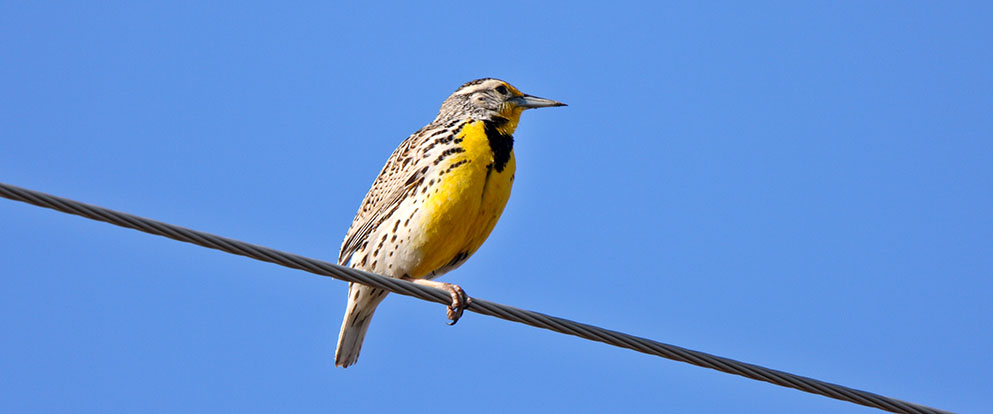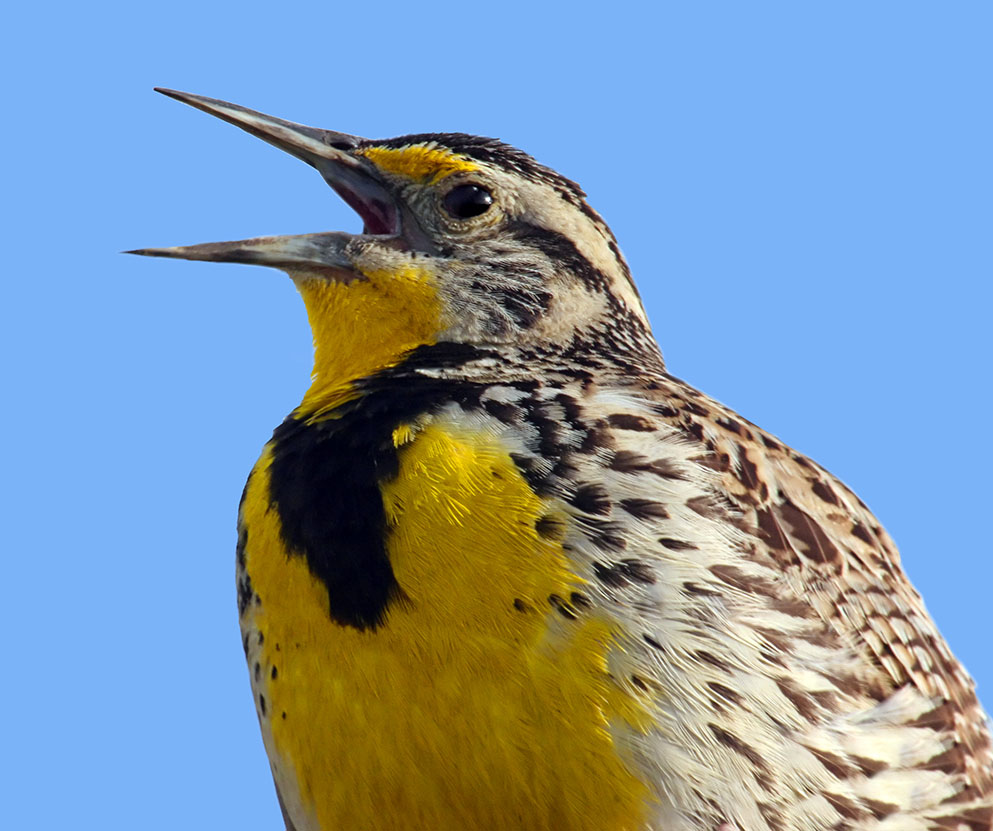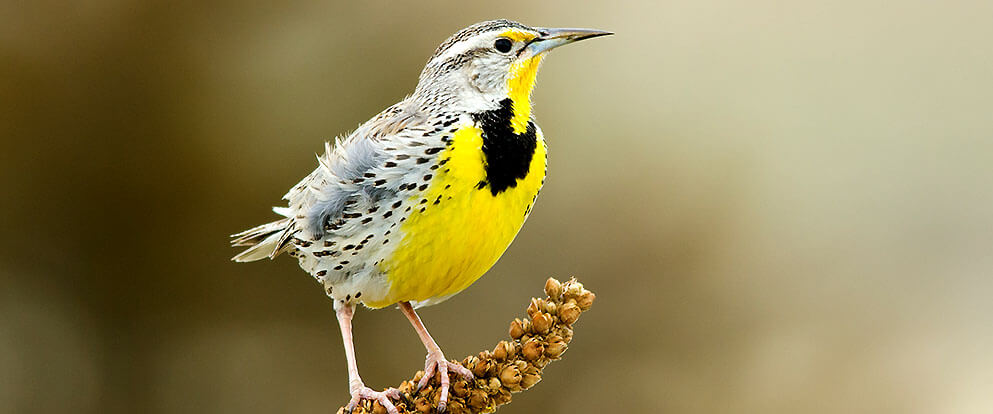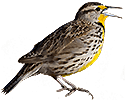Meadowlarks are stocky birds with distinctive markings that separate them from most other birds. However, Western Meadowlarks look nearly identical to their close relative the Eastern Meadowlark.
There are two ways you can tell them apart if you look and listen carefully:
Coloring: Western Meadowlarks are a lighter yellow color than Eastern Meadowlarks.
Singing: Western Meadowlarks sing more loudly and with more music than their Eastern counterparts.
Rarely found in forests or heavily wooded areas, Western Meadowlarks instead favor open location where they can look for seeds and insects while protecting their female partners from predators and other male Western Meadowlarks.
The male will select a territory and then aggressively defend it against other male Western Meadowlarks. If they have their way, male Western Meadowlarks usually have two females nesting in their territory.
Western Meadowlarks tend and feed near the ground. One of the few times you may see a Western Meadowlark on a high location (like a telephone or power line) is when he is singing to his female partners.
 Learn more about how Western Meadowlarks live
Learn more about how Western Meadowlarks live
Western Meadowlarks nest on the ground, so loose soil is preferred to woodlands with extensive tree roots. A Western Meadowlark nest is made up primarily of grass, and often has a unique feature - a woven grass roof. These birds then use a side tunnel to get into and out of the nest.
The female Western Meadowlark takes up to a week to build her nest, and then lines it with soft grasses or weeds. She will eventually lay 3-5 eggs and then incubate them while the male keeps watch.
Once the eggs hatch, the young birds will remain with the female for up to 12 days, when they are strong enough to leave the nest. She will then start over with a new brood.
Each female will try to raise a second brood before the season ends, but Western Meadowlarks are notoriously easy to chase off of their nests. The female will quickly abandon a nesting site that is bothered by people, so make sure to keep your distance from nesting birds.

With bright colors and a pure song, the Western Meadowlark is a stunning bird to observe.
One of the reasons for the popularity of the Western Meadowlark is its amazing voice. The Western Meadowlark's music is a long, harmonious song. It's a crystal clear sound - sometimes compared to a flute.
It's far more common to hear Western Meadowlarks singing than to actually see one. They are often hard to see in the grassy marshlands and fields where they live and nest.
The bright yellow chest of a Western Meadowlark sometimes gives it away but, even though they are relatively large songbirds, it can still be hard to see a Western Meadowlark before you hear it.
What Western Meadowlarks eat
Western Meadowlarks are interesting birds to observe. They will eat seeds, grain and insects - but at different times of the year. Grasshoppers and crickets are summer favorites, while seeds seem to attract them as the days turn colder. Whether they are looking for seeds or insects, watching Western Meadowlarks hunt for food in a field or pasture is a great way to learn more about them.

